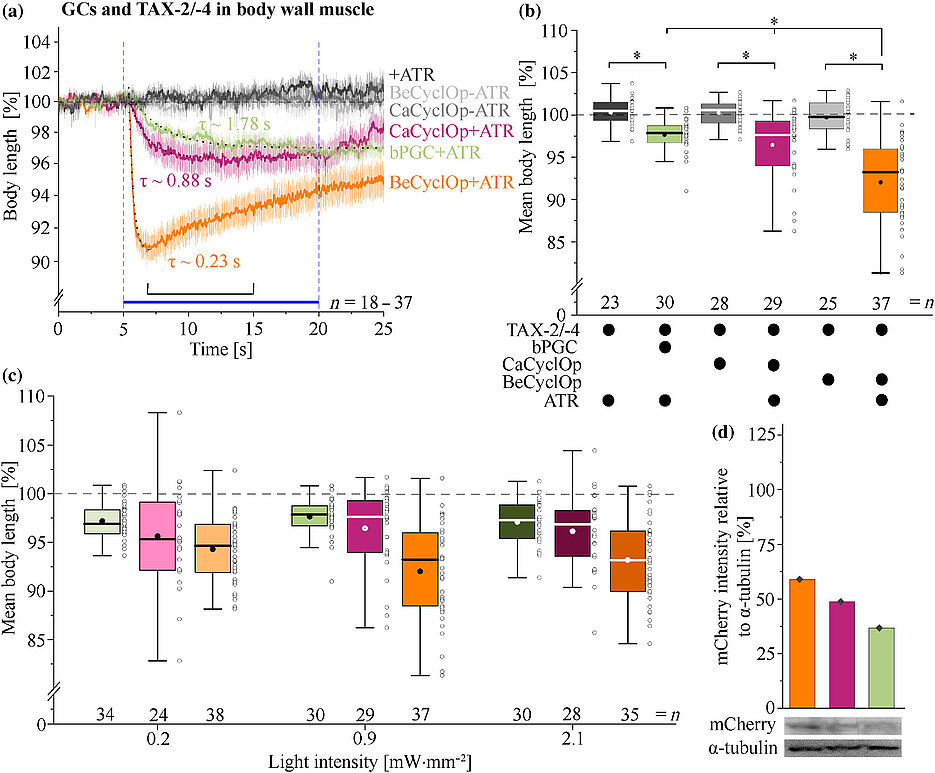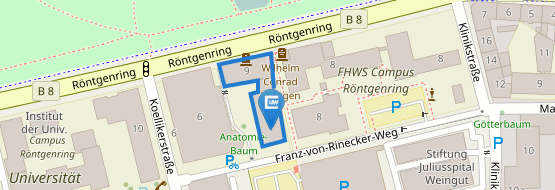Optogenetic tools for manipulation of cyclic nucleotides functionally coupled to cyclic nucleotide-gated channels
18.03.2021Optogenetic tools for manipulation of cyclic nucleotides functionally coupled to cyclic nucleotide-gated channels
Thilo Henß, Jatin Nagpal, Shiqiang Gao, Ulrike Scheib, Alessia Pieragnolo, Alexander Hirschhäuser, Franziska Schneider-Warme, Peter Hegemann, Georg Nagel, Alexander Gottschalk
Br J Pharmacol. 2021;1–19
Background and purpose: The cyclic nucleotides cAMP and cGMP are ubiquitous second messengers regulating numerous biological processes. Malfunctional cNMP signalling is linked to diseases and thus is an important target in pharmaceutical research. The existing optogenetic toolbox in Caenorhabditis elegans is restricted to soluble adenylyl cyclases, the membrane-bound Blastocladiella emersonii CyclOp and hyperpolarizing rhodopsins; yet missing are membrane-bound photoactivatable adenylyl cyclases and hyperpolarizers based on K+ currents.
Experimental approach: For the characterization of photoactivatable nucleotidyl cyclases, we expressed the proteins alone or in combination with cyclic nucleotide-gated channels in muscle cells and cholinergic motor neurons. To investigate the extent of optogenetic cNMP production and the ability of the systems to depolarize or hyperpolarize cells, we performed behavioural analyses, measured cNMP content in vitro, and compared in vivo expression levels.
Key results: We implemented Catenaria CyclOp as a new tool for cGMP production, allowing fine-control of cGMP levels. We established photoactivatable membrane-bound adenylyl cyclases, based on mutated versions ("A-2x") of Blastocladiella and Catenaria ("Be," "Ca") CyclOp, as N-terminal YFP fusions, enabling more efficient and specific cAMP signalling compared to soluble bPAC, despite lower overall cAMP production. For hyperpolarization of excitable cells by two-component optogenetics, we introduced the cAMP-gated K+ -channel SthK from Spirochaeta thermophila and combined it with bPAC, BeCyclOp(A-2x), or YFP-BeCyclOp(A-2x). As an alternative, we implemented the B. emersonii cGMP-gated K+ -channel BeCNG1 together with BeCyclOp.
Conclusion and implications: We established a comprehensive suite of optogenetic tools for cNMP manipulation, applicable in many cell types, including sensory neurons, and for potent hyperpolarization.


